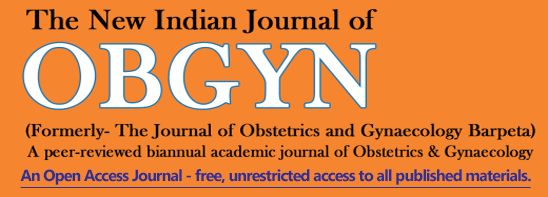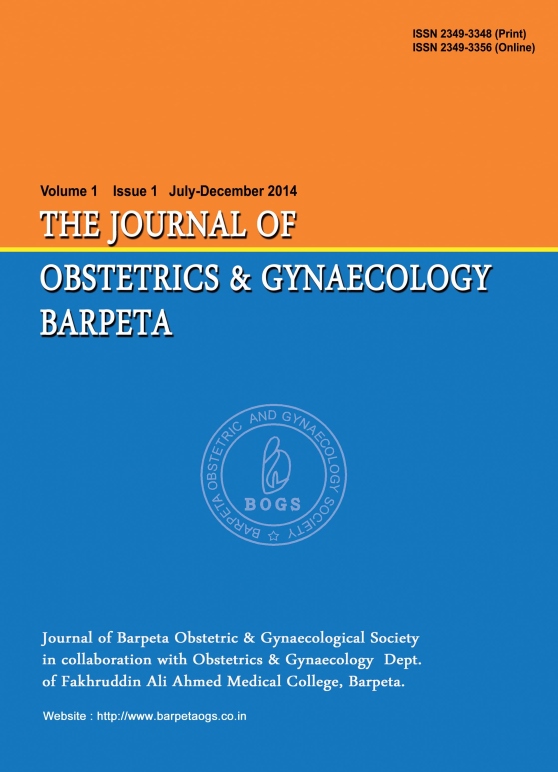
The New Indian Journal of OBGYN. Epub Ahead of Print
Histopathological examination of placenta in normal and SGA pregnancy and its association with neonatal outcome
Erum Sajid, Indrani Ganguli, Sunita Bhalla, Mala Srivastava, Mamta Dagar
ABSTRACT
Objective: To study histopathological characteristics of placenta in SGA pregnancies and to associate it with neonatal outcome. Material and methods: A total of 200 placentae were examined.100 from study group (SGA pregnancies) and 100 from low risk control group. After delivery they were examined for any gross lesion and weighed. They were then sent for histopathological analysis. The results were then tabulated and compared between the two groups (study and control). Results: On studying the histopathology of placenta we found abnormalities in 73 % of placentae in study group as compared to 34% in control group showing a significant association of placental pathology with FGR (p< 0.05). Salient histopathological findings in study group were villous infarcts (52%), fetal thrombotic arteriopathy (11%), chronic villitis (7%), perivillous fibrin deposit (49%), decreased vascularity (45%), diffuse calcification (35%), syncytial knots (38%). We found that 82% neonates were delivered before 37 completed weeks in study group which was a significant finding (p<0.01). The finding of 72% neonates in study group with birth weight <2 kg was expected due to FGR babies. This finding was statistically significant. Our study failed to demonstrate any significant relation between major placental lesions and depression of APGAR score except for perivillous fibrin deposition which showed significant relation (p<0.05). On comparing the placental lesions with decreased fetal weight (<1.5kg) we found decreased vascularity (p<0.05) closely related with decreased fetal weight (p<0.05).The other lesions failed to show any significant relationship between the two (chi square two tailed test). Conclusion: We found that though SGA foetuses are more commonly associated with histological placental abnormalities, it cannot be established whether these abnormalities certainly contribute to FGR. Malperfusion lesions of placenta show close association with not only FGR but decreased fetal weight and poor neonatal outcome. We also found the association of perivillous fibrin and decreased vascularity significantly related with adverse neonatal outcome.
Volume 1 Issue 2
Volume 2 Issue 1
Volume 2 Issue 2
Volume 3 Issue 1
Volume 3 Issue 2
Volume 4 Issue 1
Volume 4 Issue 2
Volume 5 Issue 1
Volume 5 Issue 2
Volume 6 Issue 1
Volume 6 Issue 2
Volume 7 Issue 1
Volume 7 Issue 2
Volume 8 Issue 1
Volume 8 Issue 2
Volume 9 Issue 1
Volume 9 Issue 2
Volume 10 Issue 1
Volume 10 Issue 2

